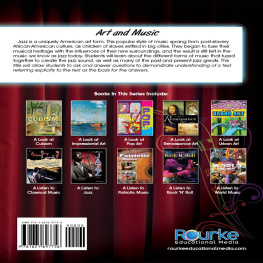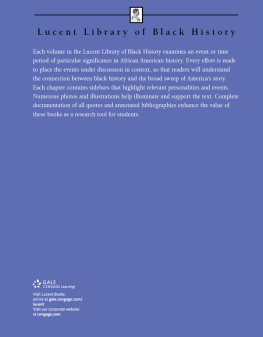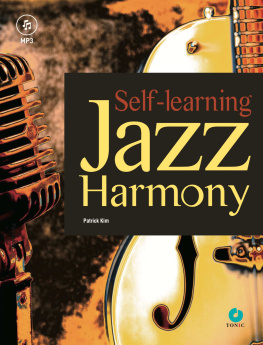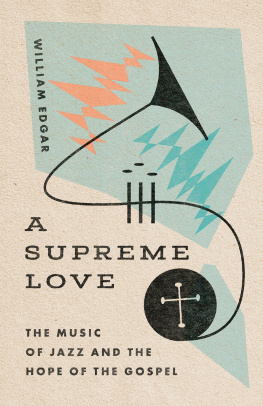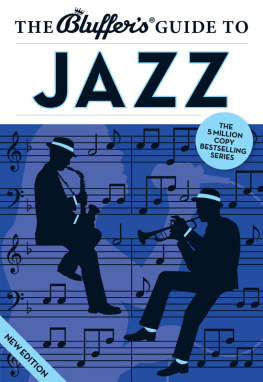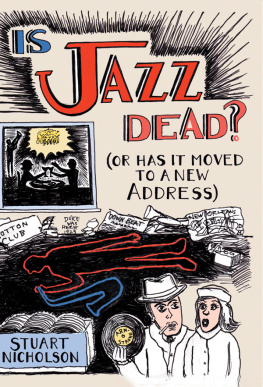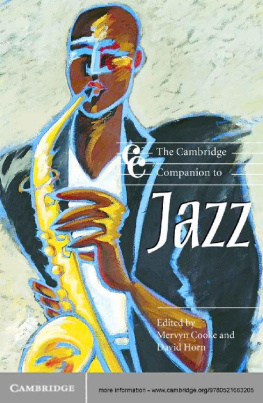1
Introduction
Most jazz isnt really about jazz, at least not in terms of how it is actually consumed .
Krin Gabbard, Jammin at the Margins: Jazz and the American Cinema (Gabbard, 1996)
This book may never have been written if I hadnt gone grocery shopping at just the right time. On a brisk autumn night, sometime in November of 2006, I left my apartment on Bathurst Street in Toronto to buy a carton of 1 percent milk from Stevens grocery store. To get to the dairy section at the back of the store, I always walked through the well stocked junk food aisle (a much more interesting route than the adjacent condensed soup aisle). While I rarely ever bought anything, I would always let my eyes rove idly over the gleaming chocolate bar wrappers and potato chip bags on the one side, pop bottles on the other, reminiscing about my misspent, Coca-Cola and Dorito-fueled youth; simpler times when I worried less about grown-up concerns such as milk fat percentage. On this particular evening, my eye was drawn to an unusually shiny bottle in the pop fridge. The caramel-colored foil wrapper screamed Jazz in large, italicized letters, with the familiar red, white, and blue Pepsi logo underneath.
As a jazz saxophonist, I was intrigued, and more than a little bemused. I grabbed two bottles, one for myself and one for my roommatea jazz bassist with a similar sense of humorand went back home, having forgotten all about the milk. Neither of us was able to get through more than a few sips of our bottles, repulsed by the overwhelmingly sweet, Caramel Cream flavor. Despite barely making it through the bottlenecks, the drink provided us with many days worth of fodder for conversation. How could the music to which we had dedicated so much of our lives be distilled into a soft drink? What on earth did diet cola have to do with jazz? And, above all, why did it taste so bad?
After my Pepsi Jazz encounter, I started noticing jazz-based advertising and branding everywhere: in Canada, I found a Jazz hair salon in Toronto; a Jazz printing and photocopying shop in Vancouver; and of course Air Canada Jazz, an airline specializing in regional travel. My favorite product (conceptually at least; at the time of writing, I havent yet worked up the nerve to taste it) is Potato Jazz, an instant, microwavable potato product by Edmonton, Alberta-based The Little Potato Company.
But the phenomenon is not uniquely Canadian. In Greece, I found a brand of womens shoes called Jazz. From New Zealand, I heard about a variety of apple called Jazz. International computer giant IBM has developed a software integration system called Jazz. I searched on YouTube (still a relative novelty in 2007) and found a variety of advertisements for jazz products, including a cologne by French fashion house Yves St. Laurent called Live Jazz, as well as the television spot for Diet Pepsi Jazz. I soon discovered that I wasnt alone in my interest in the bizarre panoply of things called Jazz. Through a friend, I found a Tumblr page operated by BBC radio producer Russell Finch called things called jazz that are not jazz.
Finchs list included several products that I had heard of, in addition to a number of others with an exceedingly tenuous connection to jazz music: the Keeler Jazz in-ear diagnostic thermometer, a Jazz blood glucose monitoring system (featuring Bluetooth wireless capability), an aerosol spray pump called Jazz, a keypad auto-lock by American lockmaker Schlage called Jazz, and a 90-meter Jazz super yacht by German shipbuilder Bluhm+Voss. As I found more and more of these products and thought about them further, my attitude gradually changed from bemusement to curiosity, and my questions became more nuanced: rather than incredulously asking, what on earth do cola, potatoes, and super-yachts have to do with jazz?, I began to wonder, what is it about jazz that has made it appealing to advertisers and marketers as an advertising and branding tool in these contexts, and for these products?
Jazz Sells works towards answering that question. Of course, given the extraordinary diversity of jazz products, there is no single answer. If jazz can simultaneously be a seasoned potato, a diet cola, an in-ear thermometer, and a super yacht, if it can cost anywhere from US$1 to 300 million, its core meaning is exceptionally elusive, if it has any singular core meaning at all. Indeed, if we expand our scope to consider brands that are connected to jazz in other waysbrands that use jazz soundtracks in advertising, or brands linked to jazz via festival, concert, or artist sponsorshipsthe waters become incredibly muddy. The astonishing diversity of brands and commodities that have been articulated to jazz speaks both to its remarkable semiotic fluidity as a cultural touchstone, and to the creativity of the various marketers and advertisers who have imagined such a bewildering array of things that jazz could potentially mean , tenuous though many of those articulations may be.
Every branding and advertising context uses jazz in a slightly different way, working to draw out a different set of musical or (more often) sociocultural themes from the music to best suit the product. Hence, rather than seeking to draw out a single, overarching themeworking to expose the singular essence of jazzs utility as an advertising tool, and concomitantly, its cultural significanceeach chapter in this book moves principally along three related trajectories, linked by a central concept.
In each chapter, I elucidate the key themes that are at play in a given example of an articulation of jazz and commodities through advertising or branding. Second, I situate these themes historically, examining how jazz advertising is predicated on jazz discourses that have emerged from a variety of sectors (chiefly musicians, critics and, somewhat tautologically, advertisers and marketers themselves), over the span of the 20th and 21st centuries. Third, I consider the ways in which jazz and advertising have interacted not only to promote individual commodities, but to contribute to the continued intellectual and emotional entrenchment of the meta-concept of consumption in global capitalism. Under-girding these three trajectories, therefore, is the deeply vexedand seldom discussedissue of jazzs circulation in a capitalist society and the culture of consumption. While each chapter retains its own particular focus and comes to its own conclusions, these respective conclusions act to illuminate this central issue from different perspectives.
Before we narrow our focus to jazz, it is worth using the introductory space of this first chapter to situate our discussion in a broader discourse, to step back and consider the wider relationship between music, advertising, consumption, and capitalism. The term capitalism refers in essence to the investment of money (or capital) for the express purpose of making a profit (Fulcher 2004: 2). Historians generally agree that the practice of capitalism has existed for thousands of years, emerging alongside the advent of mercantilism in the earliest Mesopotamian city-states. As a pervasive social and economic system, however, capitalism did not take firm hold in Europe and North America until the industrial revolution in the 18th and 19th centuries. As the industrialized manufacturing process became increasingly streamlined, the overhead costs associated with manufacturing steadily decreased, and the industrial sector became increasingly profitable for capital investors. Industries steadily grew with investment, demanding an ever-larger labor force, until ultimately manufacturing jobs gradually eclipsed agrarian work as the dominant mode of labor for most individuals.
Capitalism in North America evolved dramatically with the advent of Taylorist management strategy and Fordist mass production in the early 20th century. Frederick Taylors The Principles of Scientific Management , published in 1911, addressed one of the emergent concerns of the new industrial order: inefficient labor. While efficiently operated factories dramatically reduced manufacturing costs, the industrial technologies were expensive to operate, and inefficient labor became a frustrating and costly problem for capitalist factory owners. Among other things, Taylor called for more carefully regulated working days, and for the labor process to be divided into numerous small, easily repeatable tasks so as to minimize the time and skill required of each individual worker. Taylors management advice was intended both to maximize efficiency during the working day, and to minimize the overnight shut-down time, during which machines sat idle and unprofitable. Fords assembly lines, which debuted in Detroit a mere two years after Taylors book, were the first factories to actualize Taylors ideas to the utmost. With Taylorist management wedded to an efficient, mechanized system of assembly, the Ford Motor Company was able to produce an unparalleled number of units of their first car, the Model T, at a cost that made the automobile affordable to an unprecedented percentage of the American populace (Lee 1993: 75).



